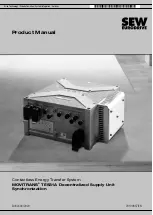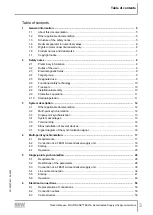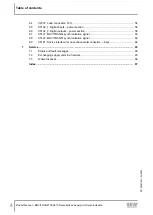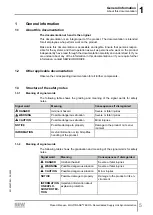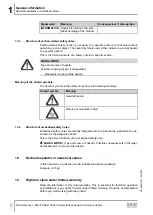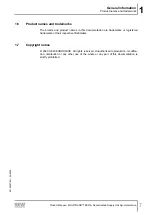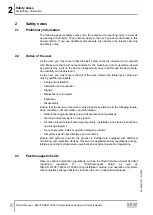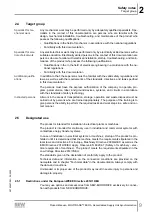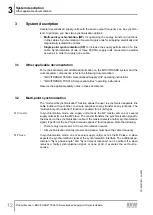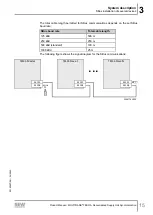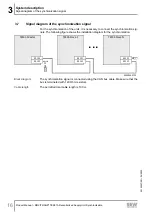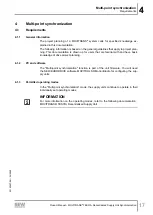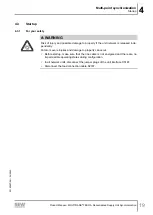
3
System description
Other applicable documentation
Product Manual – MOVITRANS
®
TES31A Decentralized Supply Unit Synchronization
12
3
System description
Several decentralized supply units with the same output frequency can be synchron-
ized. In principle, you have two synchronization options:
•
Multi-point synchronization (MP)
for optimizing the energy transfer at junctions
in line cables. Synchronization of several supply units for supplying electrically and
magnetically isolated line cables.
•
Single-point synchronization (SP)
to increase the supply performance of a line
cable. Synchronization of two or three TES31A supply units connected in parallel
at a point, in order to supply a line cable.
3.1
Other applicable documentation
For technical details and additional information on the MOVITRANS® system and the
current system components, refer to the following documentation:
•
"MOVITRANS® TES31A Decentralized Supply Unit" operating instructions
•
"MOVITRANS® TCS31A Compensation Box" operating instructions
Observe the applicable safety notes in these documents.
3.2
Multi-point synchronization
The "multi-point synchronization" function allows the user to synchronize separate line
cable routes with each other, to ensure seamless energy transfer at any junctions. The
"multi-point synchronization" function is enabled for all unit types.
MP master
In synchronization mode, one supply unit acts as the MP master and one or several
supply units act(s) as the MP slave. The master transfers the synchronization signal to
the slaves via the synchronization cable. If the master detects another synchronization
signal, it performs the set "Sync timeout response" fault response. Note the following:
•
There is only one master in the synchronization network.
•
All synchronization stations (master and slaves) must have the same frequency.
MP slave
In synchronization mode, one or several supply unit(s) act as the MP slave. A slave
expects the synchronization signal at the synchronization interface. The additional pa-
rameters "Sync phase angle" and "Sync timeout response" can be edited. If a slave
receives a faulty synchronization signal, or none at all, it executes the set fault re-
sponse.
29190657/EN – 04/2020

